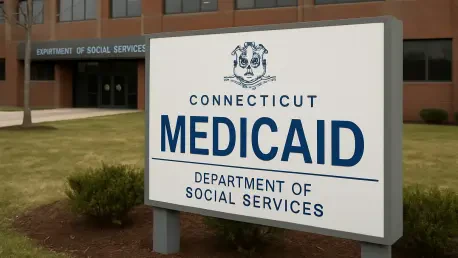Connecticut’s Medicaid program, widely recognized as HUSKY, stands at a precarious crossroads as it confronts unprecedented financial pressures that jeopardize its ability to serve nearly 926,700 low-income residents, including children, families, and individuals requiring long-term care. As one of the state’s most significant public health initiatives, HUSKY has long been a lifeline for the vulnerable, ensuring access to essential medical services. Yet, with costs spiraling out of control and federal funding cuts on the horizon, the program’s sustainability hangs in the balance. This mounting crisis raises profound concerns about whether the state can maintain health care access for those who need it most, while also navigating tight budget constraints and competing fiscal priorities. The challenges are complex, intertwining internal cost overruns with external policy shifts, and demand a closer examination of the forces at play.
Financial Strain on HUSKY
Internal Cost Drivers
The financial burden on Connecticut’s Medicaid program has reached alarming levels, with costs outstripping budget allocations at a pace that state officials struggle to manage. Just a few months into the 2024-25 fiscal year, the Department of Social Services, which oversees most Medicaid spending, forecasted a $100 million overrun on its $3.7 billion budget. This follows a staggering $166.3 million deficit from the previous year, despite additional legislative funding to cover shortfalls. Over the past decade, Medicaid expenditures have surged by 55%, significantly outpacing the 34% growth in the state’s General Fund. This disproportionate rise signals a troubling trend: without systemic intervention, the program risks consuming an ever-increasing share of state resources, potentially sidelining other critical areas like education or infrastructure. The persistent deficits underscore a structural imbalance that demands urgent attention if HUSKY is to remain viable for future generations.
Delving deeper into the root causes, specific cost drivers reveal the depth of the challenge facing HUSKY. Pharmaceutical expenses have skyrocketed by 47% since 2022, adding hundreds of millions to the program’s budget, while inpatient hospital care costs have risen by more than 10% over the same period. These increases stem from a combination of factors, including medical inflation that drives up the price of care, severe staffing shortages that elevate labor costs, and a growing demand for specialized services such as behavioral health treatment. The complexity of managing chronic conditions among enrollees further compounds these expenses, as does the need for innovative, often costly, drug therapies. State officials face a daunting task in curbing these expenditures without compromising the quality of care, a balance that remains elusive as internal pressures continue to mount with no immediate relief in sight.
External Funding Challenges
Beyond the internal cost spiral, Connecticut’s Medicaid program grapples with significant external threats that exacerbate its financial woes. During the COVID-19 pandemic, a temporary federal funding boost provided critical support, tied to a mandate for continuous coverage that prevented states from disenrolling participants. However, with that mandate expiring in April 2023, the additional federal reimbursement has vanished, even as the state’s caseload remains 10% higher than pre-pandemic levels. This mismatch between heightened demand and diminished resources has left HUSKY in a vulnerable position, struggling to meet the needs of a larger population without the fiscal cushion that once eased the burden. The loss of this support marks a pivotal shift, forcing the state to confront tough decisions about how to allocate limited funds in the face of growing health care needs.
Compounding the issue, anticipated federal cutbacks loom large, threatening to slash hundreds of millions from Connecticut’s Medicaid budget annually starting next year. These reductions extend beyond health care, potentially impacting related programs like nutrition assistance that support the same vulnerable populations. The prospect of such cuts adds a layer of uncertainty to an already strained system, as state officials must prepare for a future with even fewer resources to draw upon. The ripple effects could be profound, limiting access to essential services and placing additional pressure on local providers already stretched thin. As federal policy shifts continue to unfold, Connecticut faces the daunting task of navigating this fiscal storm while striving to protect the well-being of nearly a million residents who rely on HUSKY for their health and stability.
Policy and Legislative Responses
Coverage Expansions and Limitations
In response to the mounting crisis, Connecticut’s legislature has taken steps to address gaps in Medicaid coverage, though these efforts often collide with fiscal realities. A notable initiative expanded eligibility to children 12 and under from families without qualifying immigration status, implemented in early 2023. Initial projections estimated enrollment at around 4,250, but by mid-2024, the number had soared to 15,000, far exceeding expectations and adding unexpected strain to the program’s budget. While this expansion reflects a commitment to equity and access, it also highlights the difficulty of predicting demand and securing adequate funding to support such policies. The gap between intention and capacity underscores a broader challenge: balancing the moral imperative to cover more individuals with the practical constraints of a stretched-thin financial framework.
Another focal point of legislative action has been the push to address provider reimbursement rates, which have remained largely stagnant since 2007, making it harder for many HUSKY enrollees to find willing providers. A planned $250 million investment over four years to boost these rates was drastically reduced to just $15 million for the 2025-26 period due to strict budget caps and savings mandates. Additionally, an $80 million allocation for community health centers was approved, though officials note it mainly addresses current demand rather than curbing future cost growth. These scaled-back measures reveal the tension between the need to improve care access and the reality of limited resources. As lawmakers grapple with these trade-offs, the effectiveness of such interventions remains in question, leaving many providers and patients caught in a cycle of underfunding and unmet needs.
Debate Over State Resources
Amid record budget surpluses accumulated over the past eight years, a heated debate has emerged over whether Connecticut should tap into these funds to bolster Medicaid and offset impending federal cuts. Some Democratic legislators argue passionately for redirecting a portion of the state’s reserves—estimated to channel $1.8 billion annually toward pension debt and savings since 2017—to safeguard health care for the most vulnerable. They caution that failing to invest now could lead to steeper costs later, such as increased emergency care expenditures or economic losses from a less healthy workforce. This perspective frames Medicaid funding as not just a social obligation but also a strategic economic priority, urging a reevaluation of fiscal priorities to prevent long-term societal harm in the face of shrinking federal support.
On the other side of the debate, a more cautious approach prevails within certain administrative circles, prioritizing fiscal stability over immediate spending increases. This stance is evident in past explorations of alternative program models, such as a return to managed care, where insurance companies receive fixed payments to oversee Medicaid services. Although a recent study found no significant cost savings compared to the current fee-for-service system, the consideration itself reflects a reluctance to dip into surpluses without guaranteed efficiencies. This tension between health care advocacy and fiscal conservatism lies at the heart of Connecticut’s policy dilemma, as the state navigates competing visions for its financial future. Looking back, the choices made during this period of deliberation revealed a critical juncture, shaping how the state balanced its commitment to vulnerable populations against the imperative of long-term budgetary discipline.
Path Toward Sustainable Solutions
Reflecting on the challenges faced, it became evident that Connecticut needed to chart a forward-looking path to secure HUSKY’s future. One actionable step taken was the initiation of broader stakeholder dialogues involving providers, lawmakers, and community advocates to identify innovative cost-control measures without sacrificing care quality. Exploring partnerships with pharmaceutical companies to negotiate better pricing emerged as a potential avenue, alongside investments in preventive care to reduce expensive hospital stays. These efforts, initiated in response to past fiscal strains, aimed to address root causes rather than merely react to deficits.
Moreover, past discussions highlighted the importance of lobbying for sustained federal support, as state resources alone proved insufficient against looming cutbacks. Advocacy for policies that stabilize Medicaid funding at the national level became a priority, complemented by strategic use of state surpluses as a temporary buffer. By focusing on data-driven reforms and cross-sector collaboration, Connecticut sought to build a resilient framework for HUSKY, ensuring that lessons from previous struggles informed a more sustainable approach to health care access for its most vulnerable residents.









